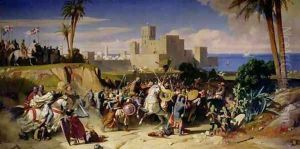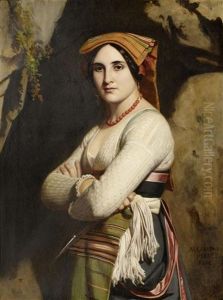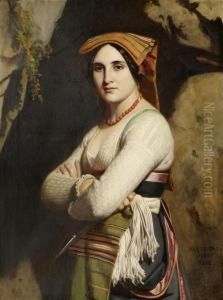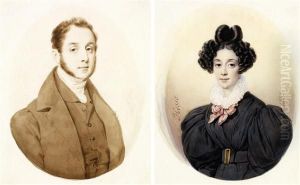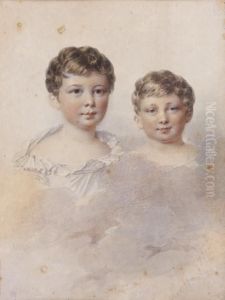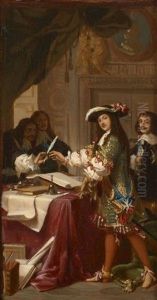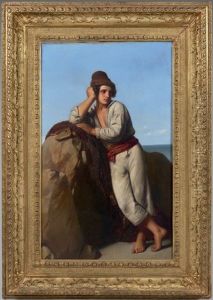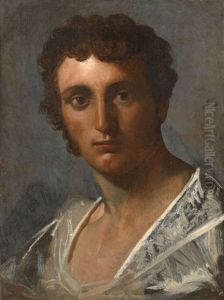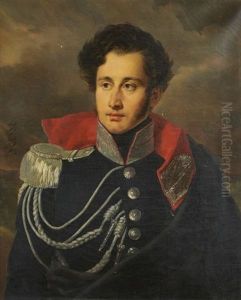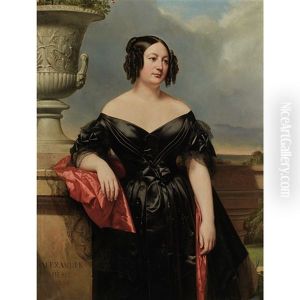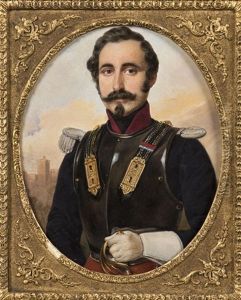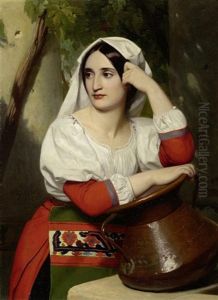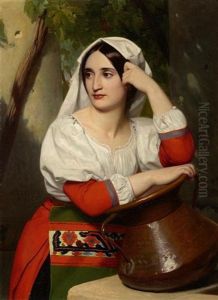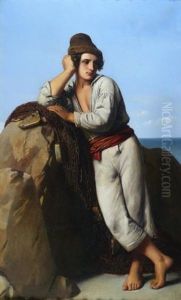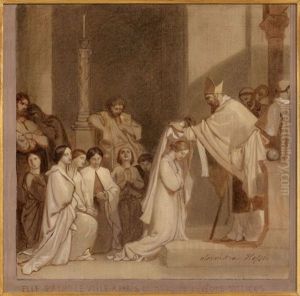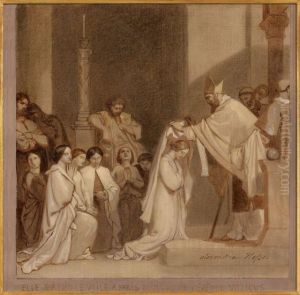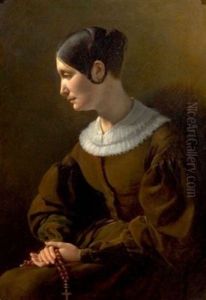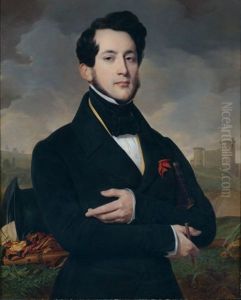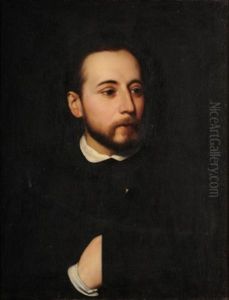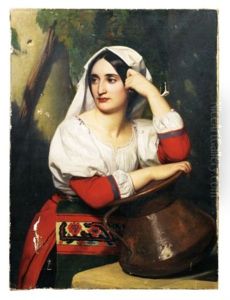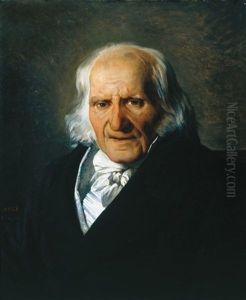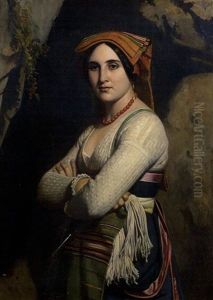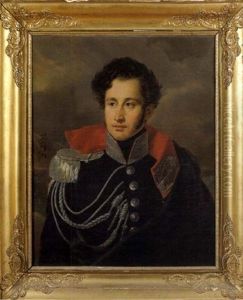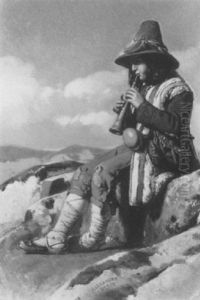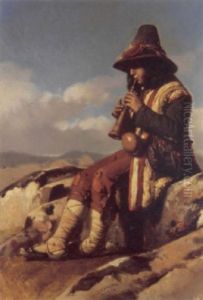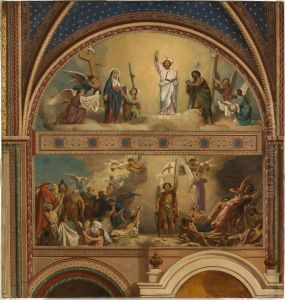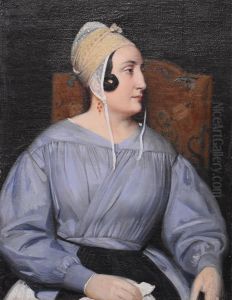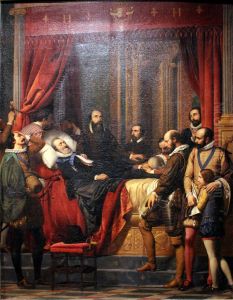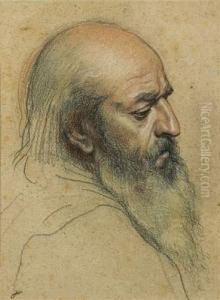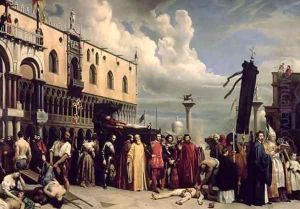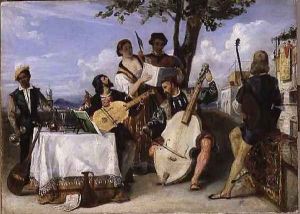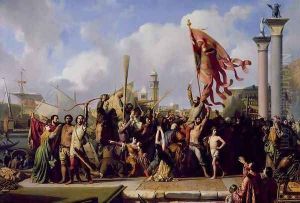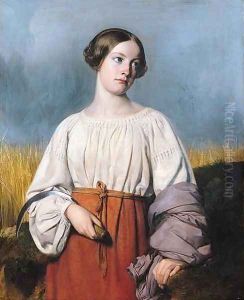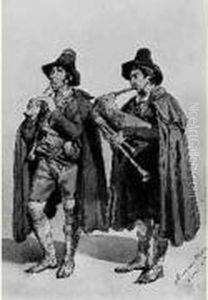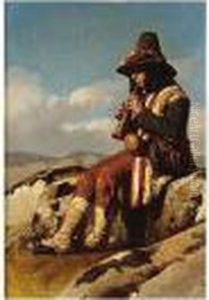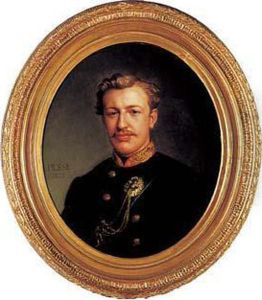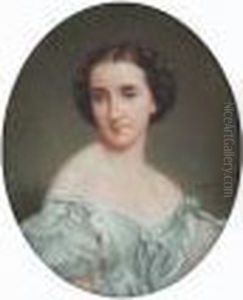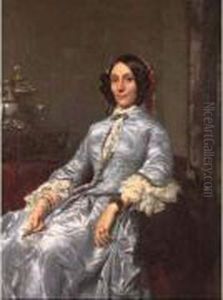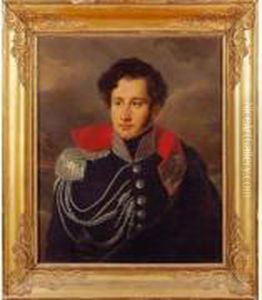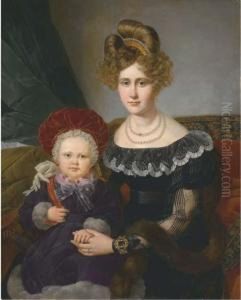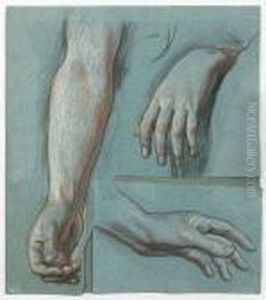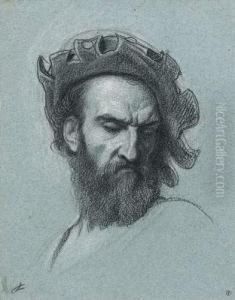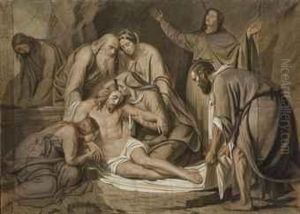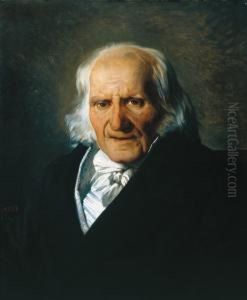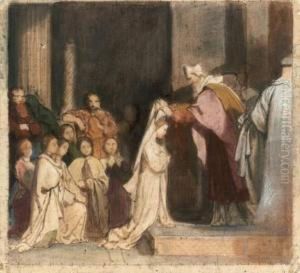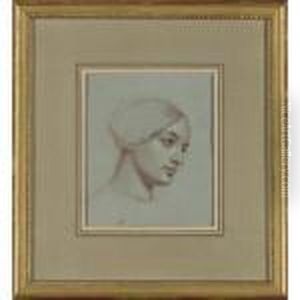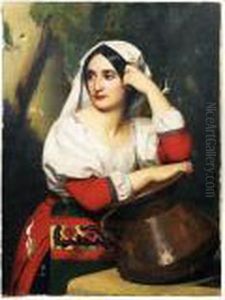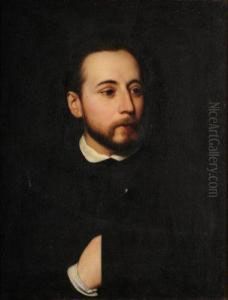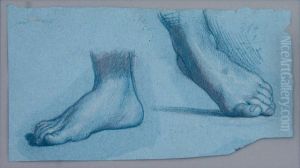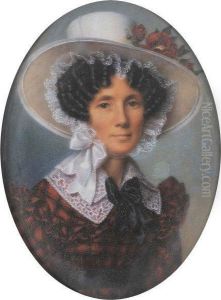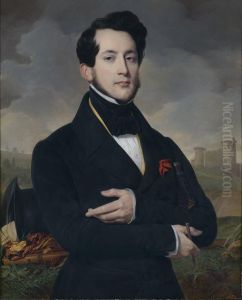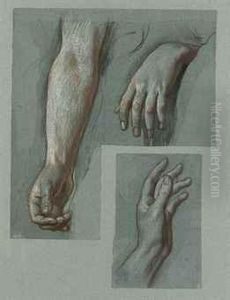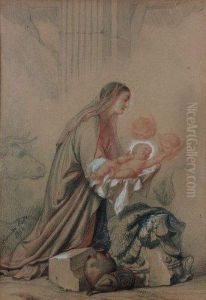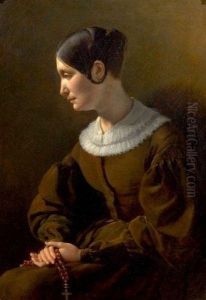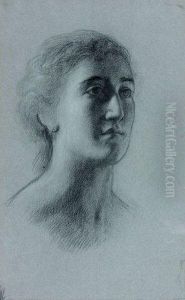Alexandre-Jean-Baptiste Hesse Paintings
Alexandre-Jean-Baptiste Hesse, also known as Jean-Baptiste Hesse, was a French painter born on October 22, 1806, in Paris, France. He was a prolific artist of the 19th century, known for his religious and genre paintings as well as his decorative work for various churches. Hesse's art was influenced by the Romantic movement, characterized by an emphasis on emotion and individualism as well as glorification of the past and nature.
Hesse received his formal training at the École des Beaux-Arts in Paris, where he studied under the neoclassical painters François-Édouard Picot and Baron Antoine-Jean Gros, both of whom were influential in shaping his artistic style. His education at this prestigious institution provided him with a solid foundation in the techniques of drawing and painting, which he would continue to refine throughout his career.
Notably, Hesse participated in the Paris Salon, an official art exhibition of the Académie des Beaux-Arts, where he gained recognition and accolades for his work. His success at the Salon helped to establish his reputation as a respected artist in French society. He was awarded a second-class medal in 1831 and a first-class medal in 1855 at the Exposition Universelle, a world's fair that took place in Paris.
Throughout his career, Hesse was commissioned to create artwork for numerous churches, which included altarpieces and mural decorations. His religious works were marked by a sense of piety and a meticulous attention to detail. In addition to his religious paintings, Hesse also created genre scenes depicting everyday life, which were popular with the public and collectors of the time.
Despite the success he enjoyed during his lifetime, Alexandre-Jean-Baptiste Hesse did not leave a lasting impact on the art world comparable to some of his contemporaries, and his work is less known today. He passed away on August 8, 1879, in Paris. While Hesse's name may not be as recognizable as other 19th-century artists, his contributions to religious and genre painting of the era remain a testament to his skills and the tastes of the period in which he lived.
